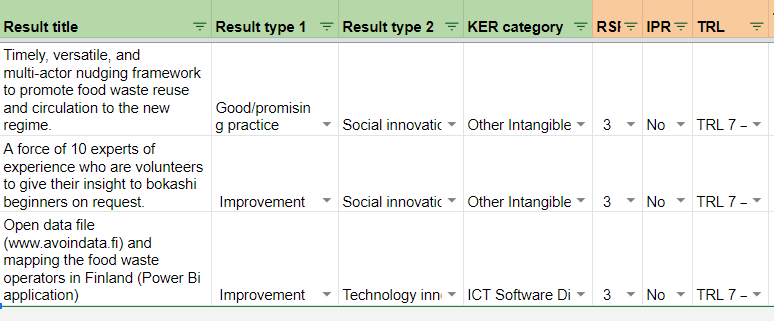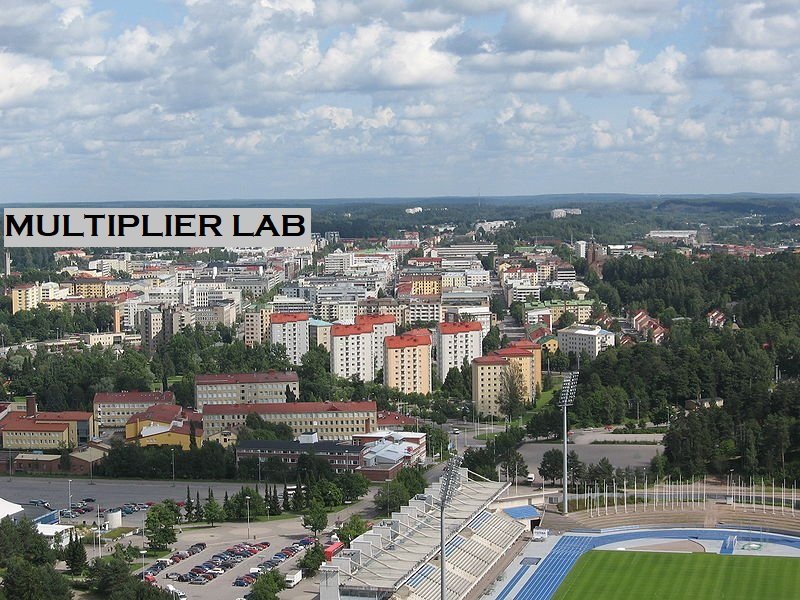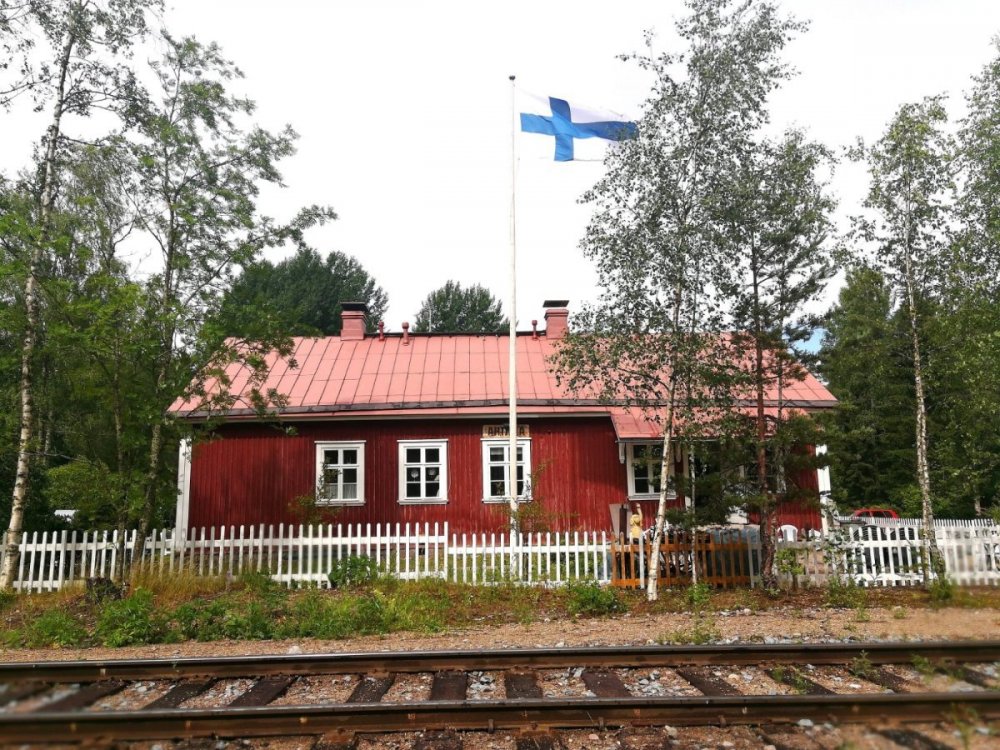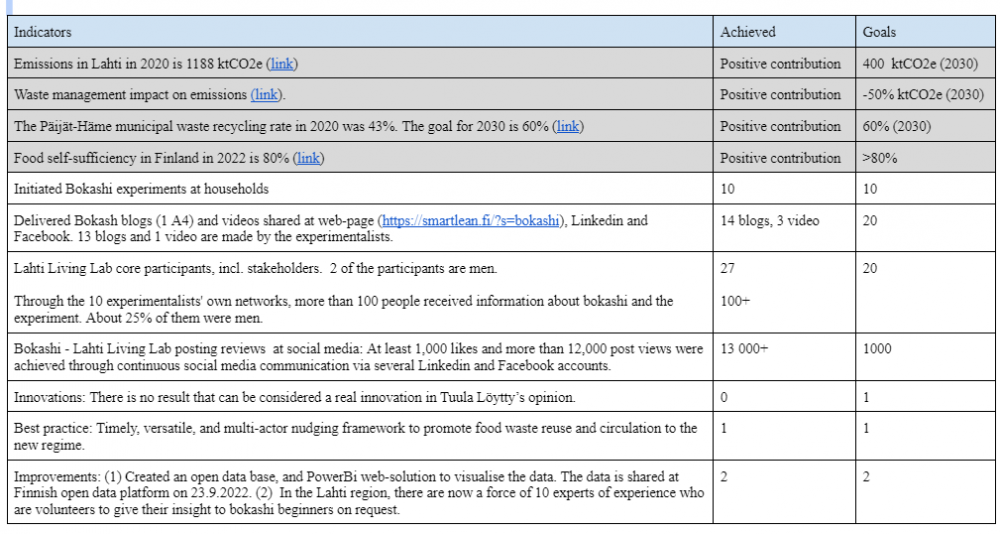Exp1: Bokashi - Food waste bio composting
Cities2030 and Lahti Living Lab carry out an experiment: Bokashi - Food waste bio composting. The coordinator of the lab is Smart & Lean Hub Oy, from Lahti Finland.
The experiment was initiated in June 2022 and it was closed by the end of September 2022. The ideation phase took circa half a month in June. The building phase which overlapped ideation and monitoring lasted from the middle of June until the end of July. The monitoring phase lasts from the middle of June until the end of September. The learning phase lasted from July until the end of September.

1. CRFS Vision 2030 and the challenge
Lahti Living Lab carries out innovation actions that contribute to EU, city of Lahti, and Cities2030 visions and objectives.
- EU Food 2030 policy: Nutrition for sustainable and healthy diets. Food systems supporting a healthy planet. Circularity an resource efficiency. Innovation and empowering communities
- Lahti vision 2030: Sustainable and carbon neutral city region
- Cities2030 objective: Enhance circularity and local food belts
The Lahti Living Lab's experiment at Cities2030 is "Bokashi - Food waste bio composting". Its objective is to explore bio-composting food waste from the table to the fields to enhance inhabitants' positive carbon handprint, self-sufficiency, and resilience.
The amount of food waste in Finland is staggering with a total of 360 million kilos of food being thrown away every year. Households' proportion of the wasted food is 107 - 137 million kg (33%). In the urban setting, the food waste is approximately 50 kg annually per person.
See figure 1.
2. Key change drivers
The general and individual change drivers are listed in figure 1. The list of general change drivers is developed based on an analysis of EU-, national- and regional initiations and actions. They are for example set EU, national and city goals, new recycling and bio waste legislation and regulation. The list of individual change drivers is a summary of experiment participants' motivation factors.
The 10 experimentalists replied to the survey about which of the listed change drivers were in their opinion the most relevant and important. Which change factors influence most of their thinking and behavior?. The most influential change factors are all linked to the experimentalists' subjective benefits: reducing the cost of public waste management, enhancing awareness and capacity, getting organic and rich soil and fertilizer, enhancing home garden growth and wellbeing, and disposal of food waste in an ecological and easy manner. The key change factors are noted in figure 1 with a red tag.
Figure 1: Experiment 1: visions, objectives, change drivers and nudges.
4. Multi-actor nudges and interventions to promote food waste bio composting and bokashi
4.1. Nudge 1: Establish a community of practice
The bokashi experiment of Lahti Living Lab target group is wide, not by quantity but by coverage of the target group. The experiment aims to engage and influence on following actors:
- 10 experimentalists (see the youtube video below)
- 2 experts of experience
- Regional policymakers: Päijät-Häme Regional Council
- City of Lahti policymakers: Lahti Region Waste Management Authority
- The public body that in practice is handling the food waste: Salpakierto Oy
- Academia: University of Oulu
- Business: BioProffa/Esbau Oy
- Other inhabitants
In addition to the above stakeholders, the experiment has looped other stakeholders and experts that represent e.g. horticulture, microbiology, food advisory, capacity building organization, and urban greening planning expert. Totally 27 people are considered to be in the communication loop.
The experiment aims to engage and impact simultaneously all engaged actors. The aim is to create actionable conditions (policymakers, policy implementors), obtain objective evidence of the applicability and effects (researchers), explore and uptake functional bokashi process (process know-how, goods, and consumable suppliers), and finally learn and test food waste bio composting in households.
The below youtube video presents the 10 experimentalists who received their new bokashi buckets in June 2022.
4.2. Nudge 2: Bokashi buckets and starters guidance
All 10 experimentalists received a bokashi package and starters' guidance in June 2022.
4.3. Nudge 3: Analysis of bokashi drivers and obstacles
At the beginning of the experiment, a deep dive into bokashi change drivers and obstacles was conducted. The purpose of the analysis was twofold: firstly to find out the subjective motivational factors of the experimentalists, but also to extend their know-how of the EU, national and local change drivers which are typically related to the legislation and regulation.
Figure 2: Bokashi change drivers and obstacles
The aim of the exercise was also to identify which of the change drivers may have an impact on the systemic transformation of the City Region Food System (Figure 3). We identified that new waste management, particularly bio waste, regulations and laws affect food waste management, models, and structures. Also, the availability of bokashi and bio-composting goods and equipment paves the path to transformation. In a summary, the regulations urge us to consider starting bio-composting in households, and on the other thanks to equipment, the threshold to start bio-composting is lower than before. This situation is the starting point for the bokashi experiment.
Figure 3: Legislation, regulation and facilities to enhance urban food waste management
4.4. Nudge 4: Online peer support
The activation of the low-threshold Whats App group enables peer support among experimentalists.
4.5. Nudge 5: Online expert by experience support
The engagement of 2 Experts of Experience in the group appeared to be truly a value-adding nudge. They supported the experimentalists, and brought in their practical know-how of the bokashi process.
4.6. Nudge 6: Social media visibility and public experiment
The experiment was communicated and shared in Facebook, Linkedin, Twitter and Instragram by experimentalists, by other stakeholders and by the coordinator of the experiment. The aim was to create encouraging pressure on the experimentalists and bring out their positive handprint on food waste management.
4.7. Nudge 7: Self-reflection on bokashi experiment
All 10 experimentalists are committed to delivering 2 either blogs or video in which they reflect on the experiment. The submission deadline is the end of September 2022. The deliverables are saved into www.smartlean.fi webpage and distributed through social media. https://smartlean.fi/category/bokashi/
4.8. Nudge 8: An initiation for public bokashi course
At the Lahti region, there has been no offering of a bokashi course by any institution. The plan to start a short course next spring or latest 2023 autumn is in the process. The course will contribute to raising awareness and building capacity for bio-composting and bokashi.
4.9. Nudge 9: Matchmaking urban agriculture and Urban Greening Plans
In the Lahti region, urban agriculture is modest and practices are undeveloped. However, the city supports the rent of allotments by providing the land areas. Urban agriculture is part of the Urban Greening Plans that municipalities are required to deliver. It's part of the European Green Deal and EU Biodiversity Strategy 2030. The experiment coordinator has communicated with a body (SYKE) that contributes to the development of Urban Greening Plans at the national level. The aim is to influence the city of Lahti to update the Urban Greening Plan and integrate urban agriculture into the content.
4.10. Nudge 10: Contribution to the ongoing academic research
Biodiverse Anthropocenes is a Research Programme of the University of Oulu supported by the Academy of Finland PROFI6 funding (2021-2026). This innovative and transdisciplinary research initiative brings together scholars from across the social and natural sciences to collaboratively investigate the biodiversity loss currently threatening multi-species well-being and planetary sustainability, and to generate future-oriented solutions both in the Arctic and around the planet.
Bokashi bio-composting is considered in the research program as a mode of urban waste management. Lahti Living Lab bokashi experiment has given a tiny input to the program. The Bokashi experiment is one of the ongoing local case studies in Finland.
4.11. Nudge 11: Lobbying to harmonize national urban food waste procedures on bokashi
Due to the novelty of bokashi and also to the recent update on bio-waste management law, the waste management authorities' practices related to bokashi vary in different regions in Finland. The aim is to influence firstly local waste management authorities' insight and interpretation so that it gives an opportunity to carry out the bokashi type of bio composting solutions. The second aim is to communicate the different practices to show the variation. .
4.12 Nudge 12: Capacity-building event 25.8.2022
The below youtube video allows you to peek at the capacity-building event that was arranged by Lahti Living Lab on Thursday 25.08.2022 at the idyllic premises of Ahtiala Old Railway Station. Nearly 20 women share knowledge, experiences, and insights on food waste recycling, bio-composting, and bokashi composting.
Description of the capacity building action (15.3.2023): https://docs.google.com/document/d/1kIcSy0_JT4-BdqTKd6YkSU8jAWa-wtTIvwCJvNpPRp0/edit?usp=sharing
Figure 4. Capacity-building event at Ahtiala old railway station
5. Innovation actions and results
5.1 Lahti Living Lab's innovation actions, results, and analysis of results
Innovation actions:

Innovation actions aka experiment's results:

5.2 Anticipated and actual action per SMART Goals
The four first indicators are on the city, region or national level. In short term, the experiment has no impact on them. In long term - 5 years - the enhanced bio composting solutions, including bokashi, has an impact on the three first indicators, but the main reason for the transition is the improved laws and regulations. Bokashi experiment raises awareness of the importance of soil in food production and household gardens, and thus in a tiny way impacts food self-sufficiency in Finland.
The other indicators in the table are directly linked to the implementation of the experiment. Only one goal was not achieved, which is the goal to deliver innovation. The other goals were nearly achieved or exceeded.
6. Expected impacts
The result aims to influence research, policymakers, policy implementations, and capacity-building institutions. They have a key role to raise awareness of different food waste management solutions that households can and will apply. After 5 years, inhabitants will separate better the biowaste than today. Those who are able to bio-compost by using isolated heat composters are the mainstream. But there is also room for those urban citizens who want to show their positive carbon handprint and process their food waste into enriched organic soil and fertilizer. For them, bokashi bio-composting will be a well-known, available and feasible solution.
The reuse of food processing residuals in the household gardens to renovate soil and enhance plant growth and yield has an impact on inhabitants and city regions. The impact reflects on inhabitants' empowerment, resilience, and self-sufficiency in urban agriculture and food production. It has positive impacts also on biodiversity. Urban agriculture binds carbon which fosters carbon neutrality and thus mitigates climate change.
7. Additional material
Linder N, Lindahl T and Borgström S (2018) Using Behavioural Insights to Promote Food Waste Recycling in Urban Households—Evidence From a Longitudinal Field Experiment. Front. Psychol. 9:352. doi: 10.3389/fpsyg.2018.00352, accessible at https://www.frontiersin.org/articles/10.3389/fpsyg.2018.00352/full
Bernstad A (2014). Household food waste separation behavior and the importance of convenience. Waste Manage. 34, 1317–1323. doi: 10.1016/j.wasman.2014.03.013, accessible at https://www.sciencedirect.com/science/article/abs/pii/S0956053X14001202?via%3Dihub
Riipi I, Hartikainen H, et.al. (2021) Elintarvikejätteen ja ruokahävikin seurantajärjestelmän rakentaminen ja ruokahävikkitiekartta. Luonnonvara- ja biotalouden tutkimus 49/2021, accesible at https://jukuri.luke.fi/bitstream/handle/10024/547657/luke-luobio_49_2021.pdf
8. Video of the journey



.thumb.jpg.f1cf7184b074cc59deef859aff6e8823.jpg)



